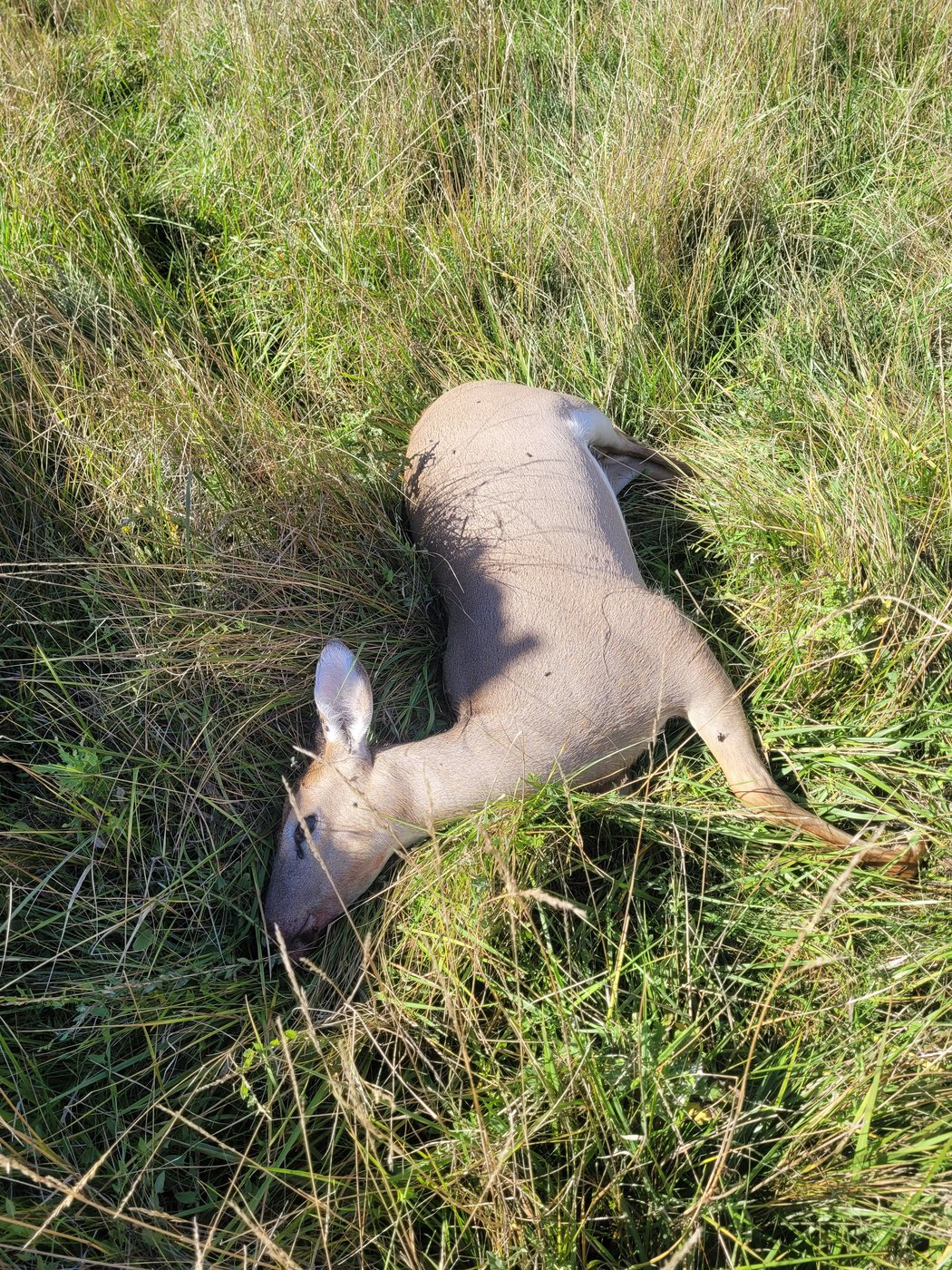
Testing planned after 30 deer found dead within two weeks in Grand Forks, B.C.
Samples have been collected to try and figure out what has killed at least 30 deer over the last two weeks in and around Grand Forks, B.C.
Jeff Gailey, president of the Grand Forks Wildlife Association, said he won’t speculate on the cause, but the samples will be tested for bluetongue and epizootic hemorrhagic disease, which killed a large number of California bighorn sheep in the region in 2021.
Gailey said reports of the dead deer have been made to the province, the town and the association, or to him directly.
“They’re not emaciated or anything like that. They look perfectly normal. Last night, we found a fawn that somebody had phoned us about that had white bubble discharge coming out of its nose and blood coming out of its rectum,” he said in an interview on Tuesday.
He said the local veterinarian is not able to do the testing, so the samples will be sent to the provincial lab in Abbotsford on Wednesday and there won’t be new information for “a few days.”
The uncertainty has people in the community on edge, he said, but the deaths don’t appear to be caused by chronic wasting disease, a different fatal illness that was discovered in B.C. for the first time last year.
“As much as I’m a hunter, I still am a conservationist, in that I love the animals and try to do what we can do to help them survive. So, to see animals dropping dead and not knowing why, it is heartbreaking, and most of the community feels the same way,” he said.
He said the 2021 outbreak was devastating.
“We lost three-quarters of our California bighorn sheep herd. I can’t even imagine how many deer we lost back then. I don’t think anybody even kept track of it, but it was devastating to our population of deer and the sheep,” he said.
A statement from the Ministry of Water, Land and Resource Stewardship says the province is aware of the latest deaths.
“We are in the process of investigating the cause of death, including through sampling and testing, and will share more information as it becomes available,” the statement says.
Chris Clark, an associate professor of large animal internal medicine at the Western College of Veterinary Medicine at the University of Saskatchewan, said Tuesday that bluetongue and EHD are closely related and can only be determined in a lab.
He said bluetongue can affect cattle, sheep, goats and deer, while EHD primarily affects deer, but neither are a risk to humans.
Both viruses are transmitted by biting midges, and in the case of bluetongue, death can occur between eight and 36 hours following the onset of symptoms.
“Bluetongue is the disease that we perhaps know a little bit more about, and bluetongue is a little bit complex in that it’s found worldwide,” he said.
“There’s at least 25 different strains of the virus, and some of them are more nasty than others, and the way that the virus behaves depends on what species is infected.”
Some strains of bluetongue have death rates of up to 90 per cent in the worst-case scenario, Clark said.
In the case of deer, animals may run a high fever, drool and have a swollen blue tongue before they are overcome with the virus, he said.
Humans cannot get sick if they are bitten by an infected midge, Clark said.
“There obviously is a lot of concern, but it is very clear that neither these diseases have any human health risks whatsoever,” he said.
“Whether it’s from the midges, direct contact, or even if you know, a hunter would have eaten an animal that was infected. There’s no human risks.”
The Canadian Food Inspection Agency says on its website that bluetongue is usually restricted to late summer and early fall, since conditions must be warm enough for the virus to multiply within the midge.
“Midge activity ceases with the first hard frost. There is no evidence that bluetongue can survive winter in Canada,” it says.
“The virus does not survive in the environment outside a midge or its animal host. It cannot be spread through contact with animal carcasses and products such as meat and wool.”
The agency says there have been occurrences of bluetongue in the Okanagan Valley in the last 40 years, which are believed to be the result of wind-borne introduction of infected midges from the United States.
In September 2015, bluetongue was confirmed in southwestern Ontario.
This report by The Canadian Press was first published Sept. 23, 2025.

Join the Conversation!
Want to share your thoughts, add context, or connect with others in your community?
You must be logged in to post a comment.



















